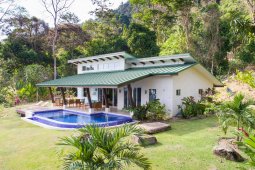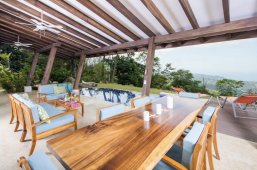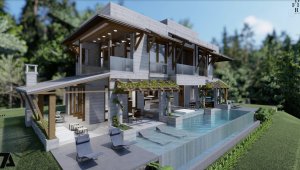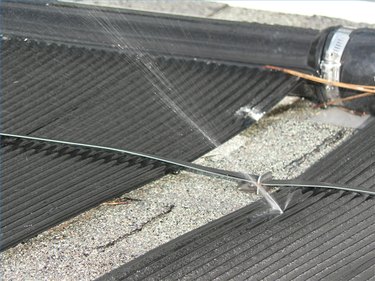l00semarble
New Member
- Joined
- Jan 1, 2022
- Messages
- 150
So I'm building a house in Costa Rica and plan to make it "off grid" with a large PV array, large battery, and larger inverters. This is not a frugal living situation but a independence choice. I will have the local GRID as a backup for if my PV does not keep up in an extended poor solar period.
Anyway - my house will have a pool of about 15,000 gallons. This is a tropical climate but we are at about 1,500ft elevation where it is just perfect nearly year round to have an open house without HVAC. We have a current house with pool in same area. The pool temperature is "refreshing". It feels good if you are hot and want to cool off but it is just a touch too cold to lounge around in for long periods. I would like to be able to raise the temperature just 2-3 degrees to make it just a little more comfortable for all.
So in my new home design I was thinking about installing a 11kw electric inline pool heater something like this one from Raypak. Then, I would configure our electrical system to use this pool heater as a dump load each day once the batteries are fully charged and we have excess PV. And if we don't have excess - no harm no foul as we don't consider pool heating to be critical.
But now that I am looking more seriously at the numbers I'm not sure how well this will work. 11kw is a lot of power obviously but a pool full of water laughs at 11kw. If we have a 20-30kw array we may have it to waste once batteries are charged. But...the RayPak manual states that you can calculate degrees per hour of temperature gain by: (kw * 410)/gallons.
(11kw * 410)/15,000gal = 0.3 deg/hr
It takes a lot of energy to heat water. Now I'm wondering if this is will be effective. I guess if I have a couple of hours a day with power to waste I may get some gains. I guess it also depends on how quickly any heat gain is lost. It is hard to tell if this is going to be worth it.
I could also do passive solar heat collectors for the pool which is the more common solution or I could do both.
Thoughts?
Anyway - my house will have a pool of about 15,000 gallons. This is a tropical climate but we are at about 1,500ft elevation where it is just perfect nearly year round to have an open house without HVAC. We have a current house with pool in same area. The pool temperature is "refreshing". It feels good if you are hot and want to cool off but it is just a touch too cold to lounge around in for long periods. I would like to be able to raise the temperature just 2-3 degrees to make it just a little more comfortable for all.
So in my new home design I was thinking about installing a 11kw electric inline pool heater something like this one from Raypak. Then, I would configure our electrical system to use this pool heater as a dump load each day once the batteries are fully charged and we have excess PV. And if we don't have excess - no harm no foul as we don't consider pool heating to be critical.
But now that I am looking more seriously at the numbers I'm not sure how well this will work. 11kw is a lot of power obviously but a pool full of water laughs at 11kw. If we have a 20-30kw array we may have it to waste once batteries are charged. But...the RayPak manual states that you can calculate degrees per hour of temperature gain by: (kw * 410)/gallons.
(11kw * 410)/15,000gal = 0.3 deg/hr
It takes a lot of energy to heat water. Now I'm wondering if this is will be effective. I guess if I have a couple of hours a day with power to waste I may get some gains. I guess it also depends on how quickly any heat gain is lost. It is hard to tell if this is going to be worth it.
I could also do passive solar heat collectors for the pool which is the more common solution or I could do both.
Thoughts?






